159. Once again. We have
tentatively and in overview mapped the positions in the night
sky of the planet Mars from April 25 AD 2023 to April 25 AD 2025
and discovered that April 25 (*35 = *400) AD 2023 ought to have been a cardinal date
(6 days after April 19):
... In other words, the ancient Druidic religion based on the
oak-cult will be swept away by Christianity and the door - the
god Llyr - will languish forgotten in the Castle of Arianrhod,
the Corona Borealis. This helps us to understand the
relationship at Rome of Janus and the White Goddess Cardea who
is ... the Goddess of Hinges who came to Rome from Alba Longa.
She was the hinge on which the year swung - the ancient Latin,
not the Etruscan year - and her importance as such is recorded
in the Latin adjective cardinalis - as we say in English
'of cardinal importance - which was also applied to the four
main winds; for winds were considered as under the sole
direction of the Great Goddess until Classical times ...
These 4 winds
of Cardea suggests the double pair April 25 and June 25
'on
one hand' together with October 25 and Chrismas Eve on the other
(different, ke).
.jpg)
|
Oct 25
(298) |
1 |
X-mas Eve
*278 |
3 |
April 25
(115) |
1 |
St Jˇhn's Day
*95 = *460 |
|
*208 |
*35 = *400
|
Ke. 1.
Other; different; different being; hare kÚ, a
different house; e-kÚ-ro-ß... e-kÚ-ro-ß... there
are some who... and others who...; me'e kÚ,
something distinct, different: te puaka ina oona
kuhane; me'e kÚ te tagata, he hakari oona, he kuhane,
an animal has no soul; man is different, he has a
body, and a soul; matu'a kÚ, the other relatives.
2. KÚ te kairua, person who turns up for meals at
other people's homes. 3. Used in exclamations: hahau
kÚ! what a cool breeze!; hana kÚ! how hot!
takeo kÚ! how cold! Vanaga. Other, distinct,
different, diverse, otherwise; koona ke,
elsewhere; tagata ke, some one else; mea ke,
contrary, distinct, otherwise; hakake, feint,
stratagem, to feign; hagake, to act contrary. T
Pau.: ke, different. Mgv.: ke, another,
other, else, different, of partial comparative value.
Mq.: ke, Ú, to be different, changed, no
longer the same. Ta.: e, different, strange,
other. Churchill.

|
 |
*225
|
 |
*107 |
 |
|
Ga2-1 (80
+ 31 = 111) |
Gb4-16
(336 ↔ 4 * 84) |
Gb8-2
(443 = 229 + 2 * 107) |
|
CANOPUS
(*95) |
305 |
Ξ ARIETIS
(*400, *35) |
0 |
Ξ ARIETIS
(*400, *35) |
|
St John's
Day (175 → 350 / 2) |
April 25 (480, 115) |
April 25 (480, 115) |
 |
... in Roman times the sky should in principle be
rising at the horizon in the east where the
Sea Beast (Great Fish, Cetus) was pushing
up the Ram
(Land, Aries) at the 'First Point in
Aries' ...
 |
|
Mars
AD 2023 |
|
Jan
5 |
370
= 354 + 16 |
*290 |
AIN (*65) → Crow |
MARCH 22 (81 ↔ 65 + 16) |
|
... There was no water in the village.
The lakes and rivers were dry. Raven and Crow, two young
girls who were having their first menstrual courses, were
told to go and draw water from the ocean. Finding the
journey too long, Raven decided just to
urinate into her basket-bucket.
She decieved no one and was severly scolded.
Crow returned much later but with drinking water
... |
|
Jan 20 |
385 = 370 +
15 |
*305 |
HYADUM II (*64) |
MARCH 21 (80 ↔ 64 + 16) |
|
Febr 4 |
365 + 31
+ 4 = 400 |
*320 |
ALDEBARAN (*68) |
MARCH 25
(JULIAN EQUINOX) |
|
April 4 |
94 |
*14 |
ξ
ORIONIS (*92) |
APRIL 18
(108) |
|
April 19 |
109 |
*29 |
ALHENA (*103) |
APRIL 29
(119) |
|
April
25 |
115 |
*35, *400 |
Ξ ARIETIS
(*107) |
MAY 2 (123 ↔
187 - 64) |
|
... The Sacred Book of the
ancient Maya Quiche, the famous Popol Vuh
(the Book of Counsel) tells of Zipacna, son of
Vucub-Caquix (= Seven Arata). He sees
400 youths dragging
a huge log that they want as a ridgepole for
their house. Zipacna alone carries the tree
without effort to the spot where a hole has been
dug for the post to support the ridgepole. The
youths, jealous and afraid, try to kill Zipacna
by crushing him in the hole, but he escapes and
brings down the house on their heads. They are
removed to the sky, in a 'group', and the
Pleiades are called after them ... |
But 2 years later, in April 25 (115) AD 2025, the position of Mars
had moved ahead from ξ Arietis (*35 = *400) to *145
(August 13, 225 = 80 + *145), i.e. to the star named Knot
(Ukdah, ι Hydrae) at the top of the Mast of Argo
Navis:


*145 (ι Hydrae) - *35 (ξ Arietis) = *110:
... About
Carmenta we know from the
historian Dionysus Periergetis that she gave orcales to
Hercules and lived to the age of 110 years. 110 was a
canonical number, the ideal age which every Egyptian wished
to reach and the age at which, for example, the patriarch
Joseph died. The 110 years were made up of twenty-two
Etruscan lustra of five years each; and 110 years
composed the 'cycle' taken over from the
Etruscans by the Romans. At the end of
each cycle they corrected irregularities in the solar
calendar by intercalation and held Secular Games ...
|
Mars
AD 2025 |
|
|
Aug 11
(223) |
J2000 RA:
8h16m30.90s |
ALTERF (β
Cancri) *143.4 |
JUNE 8 (159 =
223 - 64) |
|
April 25 (115, 400)
AD 2025 |
Aug
13 (225 = 161 + 64) |
J2000
RA: 8h22m52.75s |
UKDAH '145.4 |
JUNE 10 (161
= 115 + 46) |
|
06m21.85s / 1440 * 365.25 = 1.614 |
|
June
10 (161) AD 2025 |
Aug
17 (229) |
J2000 RA:
9h54m59.60s |
Heaven's Record *149.3 |
JUNE
14 (165) |
|
|
Aug
20 (232 = 225 + 7) |
J2000 RA:
10h08m22.30s |
REGULUS *152.7 |
JUNE
17 (168, *88) |
|
|
Sept
7 (250 = 223 + 27) |
J2000 RA:
11h16m35.70s |
Φ LEONIS →
vertical center *170.0 |
JULY
5 (186, *106) |
|
13m22.70s /
1440 * 365.25 = 3.393 |
|
June
26 (177) AD 2025 |
Aug
29 (241 = 177 + 64) |
J2000 RA:
10h44m16.18s |
*161.8 |
JUNE 26 (177) |
|
July
3 (184) AD 2025 |
Sept
6 (249 = 229 + 20) |
J2000 RA:
11h14m14.40s |
COXA (θ
Leonis) → horizontal center *169.4 |
JULY 4 (185 = 249 -
64) |
|
29m58.22s /
1440 * 365.25 = 7.602 |
|
Phoenician
qoph
 → Greek phi
Φ (φ)
→ Greek phi
Φ (φ)
Phoenician
teth
 →
Greek theta
Θ (θ)
→
Greek theta
Θ (θ) |
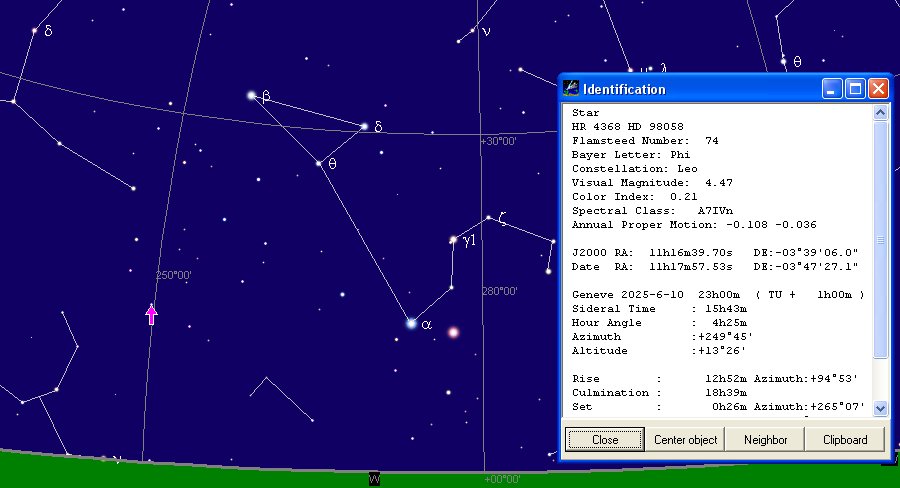
|
DEC 7 |
8 |
9 (7 * 7
* 7) |
10 |
11 (345) |
12
(*266) |
 |
 |
 |
 |
 |
 |
|
Gb2-6 |
Gb2-7 |
Gb2-8 |
Gb2-9
(35) |
Gb2-10 |
Gb2-11
(266) |
|
CLOSE TO
THE FULL
MOON: |
|
BUNDA
(Foundation)
/ KAKKAB
NAMMAΧ
(Star of
Mighty
Destiny) |
θ Piscis Austrini (330.1), λ
Oct. (330.7) |
|
Al Sa'd al Su'ud-22 (Luckiest of
the Lucky) /
Emptiness-11 (Rat)
TSIN =
36 Capricorni
(325.2),
ALPHIRK (The Flock) =
β
Cephei
(325.7),
SADALSUD =
β
Aquarii,
ξ
Gruis (325.9) |
No star listed (326) |
CASTRA = ε Capricorni
(327.2),
BUNDA = ξ Aquarii
(327.5)
SIRIUS (α Canis Majoris) |
Mahar sha hi-na
Shahū-26 (Western One in the
Tail of the Goat)
NASHIRA
=
γ
Capricorni
(328.0),
ν
Oct. (328.3), AZELFAFAGE
=
π╣
Cygni,
κ
Capricorni (328.7) |
Arkat sha hi-na
Shahū-27 (Eastern One in the
Tail of the Goat)
ENIF (The Nose) =
ε
Pegasi, ERAKIS =
μ
Cephei
(329.2),
46 CAPRICORNI,
JIH (the Sun)
=
κ
Pegasi
(329.3),
ι
Piscis Austrini (329.4),
λ
Capricorni (329.6),
ν
Cephei (329.7),
DENEB ALGIEDI =
δ
Capricorni
(329.8)
*288.0 = *329.4 - *41.4 |
|
Febr 9
(40) |
10 |
(343 +
64) |
(408 =
43 +
365) |
13 |
All
Hearts'
Day |
|
... On
February
9 the
Chorti
Ah K'in,
'diviners',
begin
the
agricultural
year.
Both the
260-day
cycle
and the
solar
year are
used in
setting
dates
for
religious
and
agricultural
ceremonies,
especially
when
those
rituals
fall at
the same
time in
both
calendars.
The
ceremony
begins
when the
diviners
go to a
sacred
spring
where
they
choose
five
stones
with the
proper
shape
and
color.
These
stones
will
mark the
five
positions
of the
sacred
cosmogram
created
by the
ritual.
When the
stones
are
brought
back to
the
ceremonial
house,
two
diviners
start
the
ritual
by
placing
the
stones
on a
table in
a
careful
pattern
that
reproduces
the
schematic
of the
universe.
At the
same
time,
helpers
under
the
table
replace
last
year's
diagram
with the
new one.
They
believe
that by
placing
the
cosmic
diagram
under
the base
of God
at the
center
of the
world
they
demonstrate
that God
dominates
the
universe.
The
priests
place
the
stones
in a
very
particular
order.
First
the
stone
that
corresponds
to the
sun in
the
eastern,
sunrise
position
of
summer
solstice
is set
down;
then the
stone
corresponding
to the
western,
sunset
position
of the
same
solstice.
This is
followed
by
stones
representing
the
western,
sunset
position
of the
winter
solstice,
then its
eastern,
sunrise
position.
Together
these
four
stones
form a
square.
They sit
at the
four
corners
of the
square
just as
we saw
in the
Creation
story
from the
Classic
period
and in
the
Popol
Vuh.
Finally,
the
center
stone is
placed
to form
the
ancient
five-point
sign
modern
researchers
called
the
quincunx
...

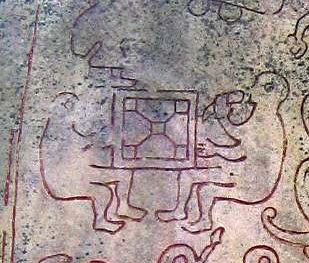 |
|
░Febr 5 |
6 |
7 |
8 (*324) |
9 |
10 (41) |
|
'Jan 13
(378) |
14 |
15
(*300) |
16 |
17 |
18 (383) |
|
"Dec 30
|
31 |
"Jan 1 |
2 |
3 (368) |
4 |
|
CLOSE TO
THE SUN: |
|
JUNE
7 (*78) |
8 |
9 |
JUNE
10 (161) |
11 |
12 |
|
Fibonacci:
1, 1, 2,
3, 5, 8,
13, 21,
34, 55
... →
1.618033998
... = φ
= (1 +
√5) / 2.
 |
|
The Knot
(Ukdah) |
5 Imix 9 Kumk'u
Rishu A.-13 (Head of the Lion)
ψ Leonis (146.4),
RAS ELASET AUSTRALIS = ε Leonis
(146.6)
*105.0 = *146.4 - *41.4 |
VATHORZ PRIOR = υ Carinae
(147.9) |
|
Star-25 (Horse) /
ANA-HEU-HEU-PO-5 (Pillar where
debates were held)
ALPHARD (The Horse)
=
α
Hydrae
(142.3),
ω
Leonis (142.6),
τ╣
Hydrae (142.7) |
Al Tarf-7 (The End)
ψ
Velorum (143.3),
ALTERF =
λ
Leonis,
τ▓
Hydrae (143.4),
ξ
Leonis (143.5)
*102.0 = *143.4 - *41.4 |
A Hydrae
(144.1)
VEGA (α Lyrae)
|
Creation of our present world
UKDAH (Knot) =
ι
Hydrae
(145.4),
κ
Hydrae (145.5),
SUBRA =
ο
Leonis
(145.8)
*104.0 = *145.4 - *41.4
ALPHEKKA MERIDIANA
April 25 AD 2025 (115)
MARS (*35) |
|
Aug 10 |
11 |
12 |
13
(*145,
225) |
14 |
15 (227) |
|
░Aug 6 |
7 |
8 (220) |
9 |
10 |
11
(*143) |
|
'July 14 |
15 |
16 |
17
(*118) |
18 |
19 (200) |
|
"June 30 |
"July 1 |
2 |
3 (*104) |
4 |
5 (186) |
And then we
could trace Mars
beyond April 25
AD 2025 at Ukdah
to the
constellation of
Leo,
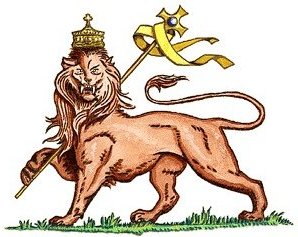
|
LEO: |
|
10 |
Maghā
the bountiful |
α Leonis
Regulus |
Royal Throne |
Aug 20 |
JUNE 17 (168) |
DEC 17 (351) |
|
11 |
Purva Phalguni
first reddish
one |
δ and θ Leonis
Zosma and Coxa |
Front legs of bed, hammock, fig
tree |
Sept 6 |
JULY 4 (185) |
JAN 3 (368) |
 |
|
1 |
Uttara Phalguni
second reddish
one |
β Leonis
Denebola |
Four legs of bed,
hammock |
Sept 15
|
JULY 13 (191 + 3) |
JAN 12 (370 + 7) |
viz. to the
right ascension
line at June 10
(161, *81)
= April 25 (115,
*35)
+ 46 = 161,
which was *20
days before the
cardinal point
at Coxa
(the Hips of
Leo,
θ):



.jpg)

... At the end of each cycle they
corrected
irregularities
in the solar
calendar by
intercalation
and held Secular
Games ...
The Mayas used a
firmly Closed Shell
- a sure sign
known since
prehuman times
for some tiny
delicious thing inside
good to eat (kai)
- in order to
visualize (night
number)
zero (0), i.e.
the origin of a
new counting
cycle after
the necessary corrections at
the end of the
previous cycle:

... Long ago in
the very
beginning of
time there dwelt
within a shell
an infant god
whose name was
Ta'aroa.
He was
Ta'aroa the
unique one, the
ancestor of all
gods, the
creator of the
universe whose
natures were
myriad, whose
backbone was the
ridgepole of the
world, whose
ribs were its
supporters. The
shell was called
Rumia,
Upset. Becoming
aware at last of
his own
existence and
oppressed by a
yearning
loneliness
Ta'aroa
broke open his
shell and,
looking out,
beheld the black
limitless
expanse of empty
space.
Hopefully, he
shouted, but no
voice answered
him. He was
alone in the
vast cosmos.
Within the
broken Rumia
he grew a new
shell to shut
out the primeval
void ...
In the
rongorongo idiom
the
corresponding
icon was
probably the
mama (→
Pachamama
and
Paximama)
type of
glyph.
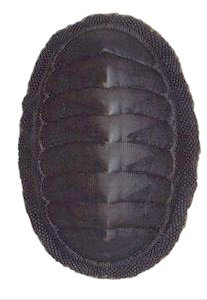
... Raven began
to search for
the girls. For
it is the way of
things in the
world that there
are both males
and females of
every creature.
Somewhere there
must be girls.
Raven searched
and searched.
Under logs and
behind rocks, he
looked. But he
could not find
the hiding place
of the first
girls.
But as he
searched, the
tide was going
out, and as it
reached its
lowest, the
Raven spotted
some giant
Chitons clinging
to the rocks.
These giant
shell fish had
but one shell,
fastened tightly
to the rocks
with huge soft
lips around
their edges.
Raven pried one
loose with his
beak. And there
inside was a
girl. He pried
off another, and
another, and
another in each
was a girl. They
were very
similar to the
creatures he had
found in the
clamshell, but
more like the
Chiton, softer
and rounder, in
contrast to the
hard shell and
strong muscles
of the clam. And
these were just
as frightened of
the Raven. He
gathered them
onto his back
with difficulty,
and brought them
to the boys he
had found in the
clamshell ...

*170.0 (φ
Leonis) - *110.0
(Carmenta) =
*60.0:
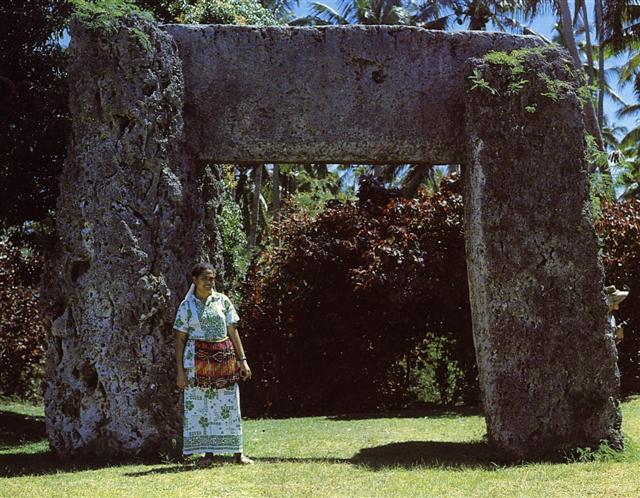
We can conclude
that because
the
fraction .4 of a
right ascension
day (night)
... From a religious point of
view, the high regard for flies, whose increase
or reduction causes a similar increase or
reduction in the size of the human population,
is interesting, even more so because swarms of
flies are often a real nuisance on Easter
Island, something most visitors have commented
on in vivid language. The explanation seems to
be that there is a parallel relationship between
flies and human souls, in this case, the souls
of the unborn. There is a widespread belief
throughout Polynesia that insects are the
embodiment of numinous beings, such as gods or
the spirits of the dead, and this concept
extends into Southeast Asia, where insects are
seen as the embodiment of the soul ...
was
evidently the established
rule in order to
identify numbers
congruent with
the star
Bharani
(*41.4) in the
asterism named
the Northern Fly
(Musca Borealis)
the fraction
zero (.0) must
refer to numbers
congruent with
the Sun. Like
empty shells
from where you could
listen to
distant spirits of the
Sea.
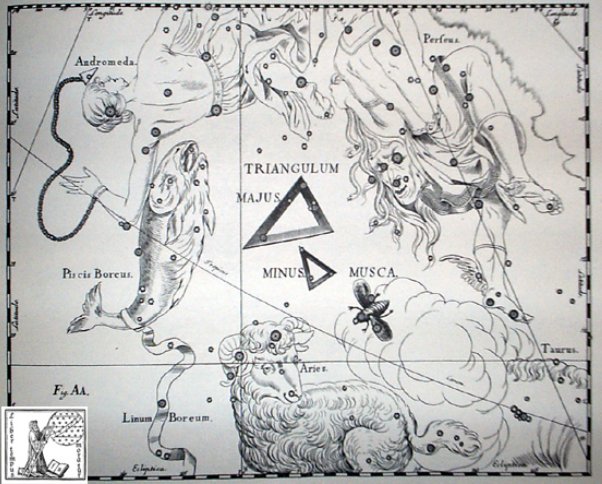
|
DEC 13
(LUCIA) |
14 (*268) |
15 |
16 (350) |
17 |
 |
 |
 |
 |
 |
|
Gb2-12 |
Gb2-13 |
Gb2-14 (40) |
Gb2-15 (270 =
350 - 80) |
Gb2-16 |
|
CLOSE TO THE FULL MOON: |
|
KUH (Weeping)
=
μ
Capricorni (331.4),
γ
Gruis (331.5)
*290.0 = *331.4 - *41.4 |
No star listed (332) |
η
Piscis Austrini (333.4)
*292.0 = *333.4 - *41.4 |
Rooftop-12
(Swallow)
22h (334.8)
KAE
UH (Roof) = ο Aquarii
(334.0),
AL
KURHAH (White Spot) = ξ Cephei (334.4),
SADALMELIK
(Lucky King) = α Aquarii,
AL DHANAB (The Tail) = λ Gruis
(334.6), ι Aquarii, ν Pegasi (334.7)
*293.0 = *334.4 - *41.4 |
ι Pegasi (335.0),
ALNAIR (The Bright One) =
α
Gruis
(335.1),
μ
Piscis Austrini,
υ
Piscis Austrini (335.3),
WOO (Pestle) =
π
Pegasi
(335.7),
BAHAM =
θ
Pegasi (Good Luck of the Two Beasts),
τ
Piscis Austrini (335.8) |

... Horapollo, the grammarian of Alexandria,
about A.D. 400, tells us that the crane was the
symbol of a star-observer in Egypt ... |
|
Febr 15 |
16 |
17 (413
→ 14 * 29Ż) |
18 |
19 (50) |
|
░Febr 11 (42) |
12 (408) |
13 |
2-14 |
15 (46) |
|
'Jan 19 (384) |
20 |
21 |
22 |
23 (*308) |
|
"Jan 5 (370) |
6 |
7 (372) |
8 (*293) |
9 |
|
CLOSE TO THE SUN: |
|
JUNE
13 (*84) |
14 (165
↔ 115
+ 50) |
15 |
16 |
17 (168) |
|
υ╣
Hydrae (148.4),
RAS ELASET BOREALIS
(Northern Head of the Lion) =
μ
Leonis
(148.7)
*107.0 = *148.4 - *41.4 |
TSEEN KE (Heaven's Record) =
φ
Velorum
(149.9)
June 10 AD 2025 (161)
MARS (*81) |
ν Leonis (150.1), π Leonis (150.6) |
υ▓ Hydrae (151.8) |
Al Jabhah-8 (Forehead)
/
Maghā-10 (Bountiful)
/
Sharru-14 (King)
10h (152.2)
AL JABHAH =
η
Leonis (152.4),
REGULUS (Little KIng)
=
α
Leonis
(152.7)
*111.0 = *152.4 - *41.4 |
|
Aug 16 (*148) |
17 |
18 |
19 |
20 (*152) |
|
░Aug 12 (*144) |
13 |
14 |
15 |
16
(*148) |
|
'July 20 (*121) |
21 |
22-7 |
23 |
24
(*125) |
|
"July 6 (*107) |
7 |
8 |
9 |
10
(*111) |
 |
 |
 |
 |
 |
|
Ga4-1 (84) |
Ga4-2 |
Ga4-3 |
Ga4-4 |
Ga4-5 (88) |
2 * 16 = 64 / 2.
|
JAN 2
(184 + 183) |
3 |
4 |
JAN
5
(370) |
 |
 |
 |
 |
|
Gb2-32 |
Gb2-33 |
Gb2-34 (60) |
Gb2-35 (229 + 61 = 290) |
|
CLOSE TO THE FULL MOON: |
|
SIMMAH = γ Piscium
(351.7) |
Φ Aquarii (352.0), ψ Aquarii (352.4),
χ
Aquarii (352.6),
γ
Tucanae (352.8)
*311.0 = *352.4 - *41.4 |
ο Cephei (353.3),
KERB (Bucket Rope) = τ Pegasi
(353.6) |
κ
Piscium (354.2),
θ
Piscium (354.4),
υ
Pegasi (354.9)
*313.0 = *354.4 - *41.4 |
|
March
7 (66 = 54 + 12) |
8
(432) |
9
(68) |
10
(*354) |
|
░March 3 (62) |
4 (428) |
5
(64) |
6
(*350) |
|
'Febr
8 (27 + 12 = 39) |
9
(40) |
10
(*326) |
11 (407) |
|
"Jan 25 (13 + 12) |
26 |
27
(*312) |
28
(393) |
|
CLOSE TO THE SUN: |
|
JULY
3 (184 = 172 + 12) |
4 (*169 - *64 = *105) |
5 |
JULY
6
(*107) |
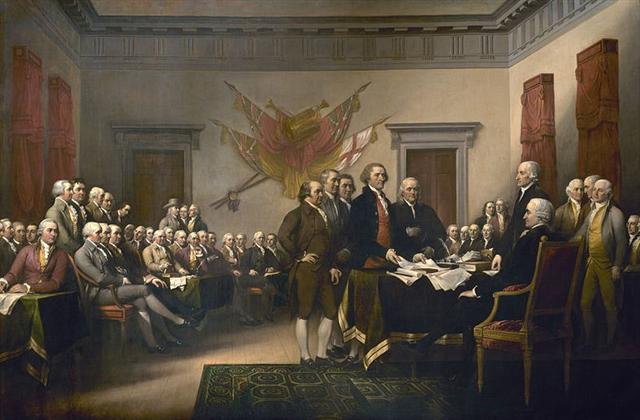 |
|
AL
SHARAS
(The Ribs) = β Crateris
(168.6) |
Al Zubrah-9 (Mane)
/
Purva Phalguni-11
(First Reddish One - Fig Tree)
ZOSMA (Girdle, not Belt)
=
δ
Leonis
(169.2),
COXA (Hips)
=
θ
Leonis (169.4)
*169.4 - *41.4 = *128.0 |
φ Leonis (170.0),
ALULA
(First
Spring of the Gazelle)
=
ξ, ν Ursae Majoris
(170.5),
LABRUM = δ Crateris
(170.6) |
γ Crateris, π Centauri (172.0),
κ
Crateris (172.5),
τ
Leonis (172.8)
GREDI (α Capricorni)
|
|
Sept
5 (248 = 236 + 12) |
6
(249, *169) |
7 |
8
(*171) |
|
░Sept
1 (244) |
2 |
3 |
4 (*167) |
|
'Aug
9 (221 = 209 + 12) |
10 |
11 |
12
(*144 = *171 - ' 27) |
|
"July
26 (207 = 195 + 12) |
27 |
28 |
29
(*130 = *171 - *41) |
 |
 |
 |
 |
|
Ga4-21
(184 - 80) |
Ga4-22 (105) |
Ga4-23 |
Ga4-24 (→ 42 * 4 =
336 / 2) |
 |
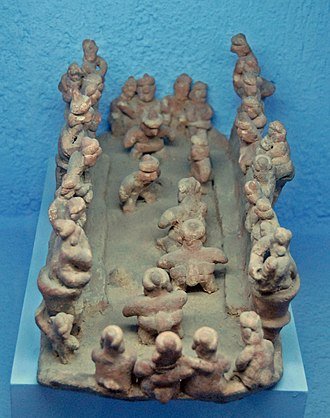
|
.jpg)
















.jpg)




















